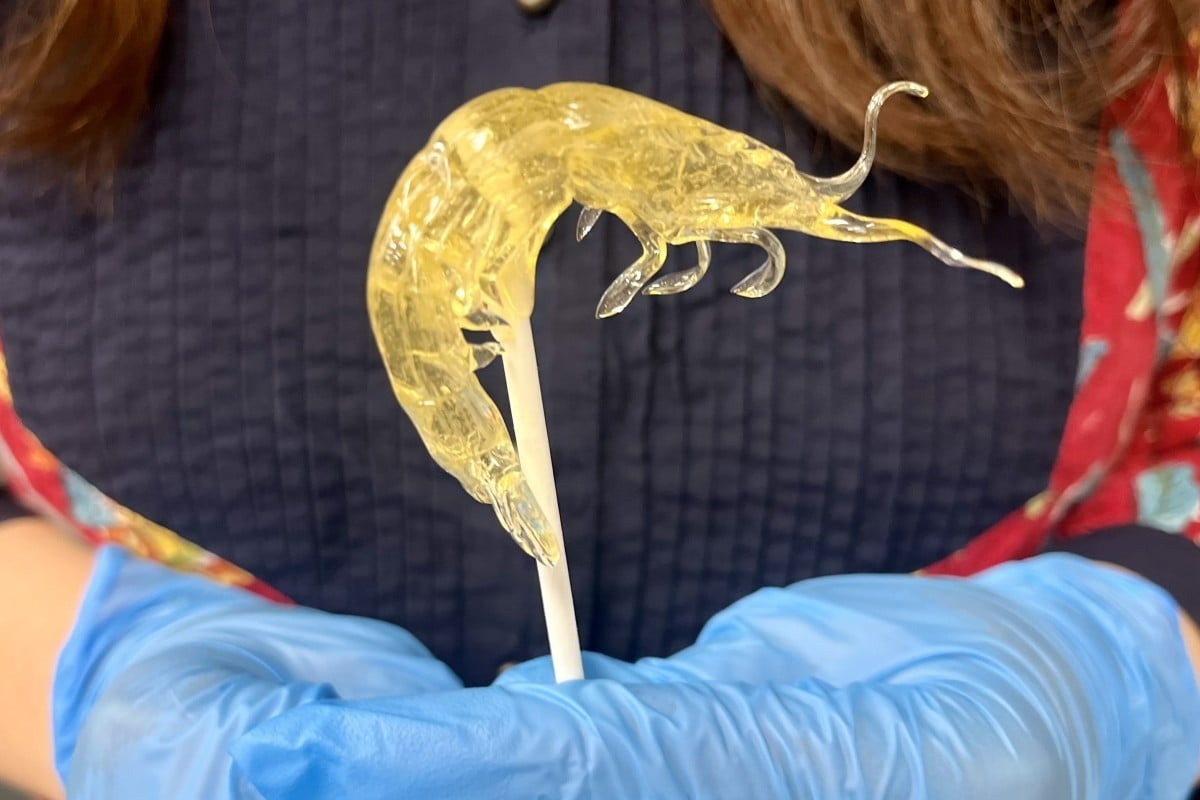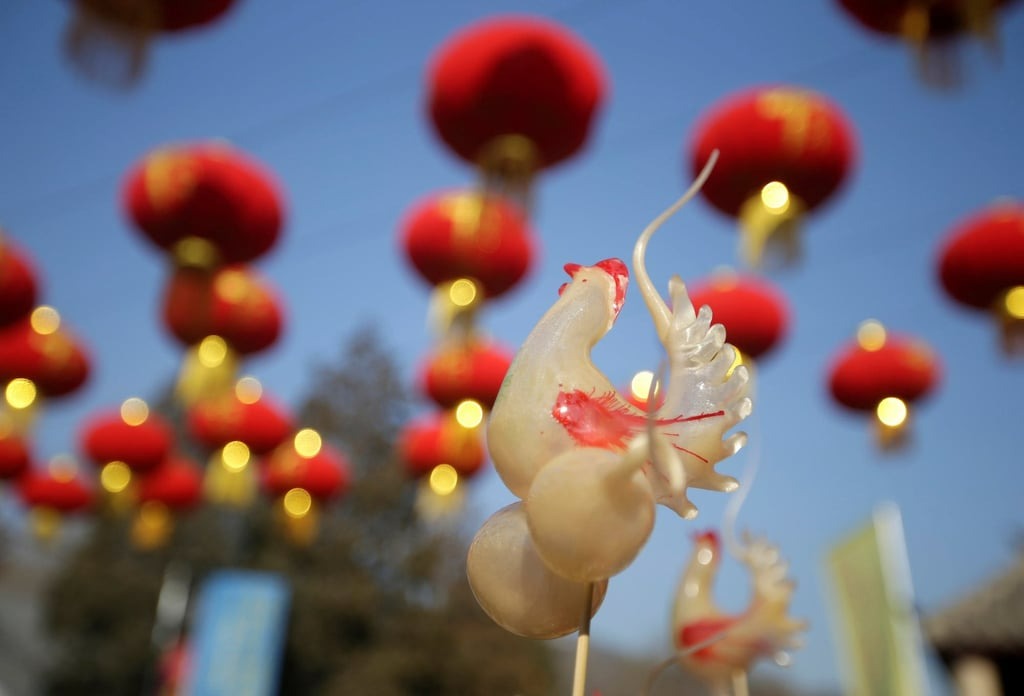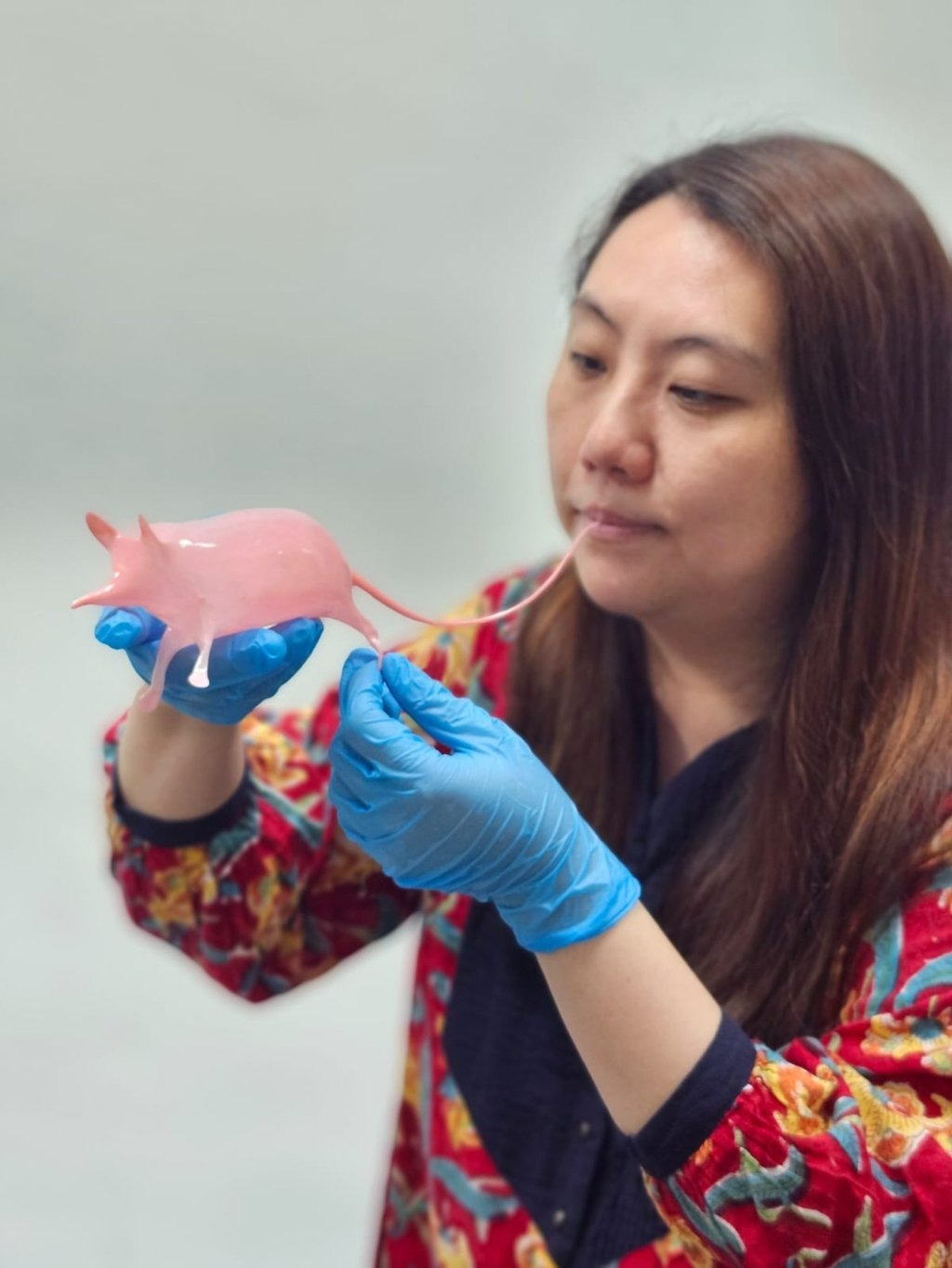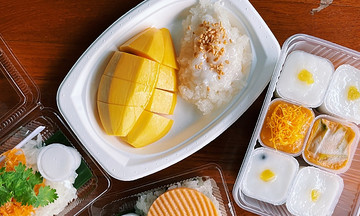Hong Kong artisan Anne Sit Kim-ping rolls a sticky, hot blob of sugar and wraps it around a small skewer. By pulling and molding, she transforms the sugar into the shape of a shrimp.
The piece is completed in under two minutes. Speed is crucial in sugar sculpting and blowing. If the process is too slow, the sugar cools and hardens, becoming impossible to shape. Temperature control is vital. Sit says she even adjusts the air conditioning because a warmer atmosphere helps the shaping process.
Sugar blowing is an ancient folk technique in which artisans use caramelized sugar to create 3D shapes, similar to glassblowing. The sugar is heated to a pliable state. The artisan then blows air into it to inflate the sugar, much like glassblowing, and quickly molds it into intricate forms. This stage requires dexterity and precise control.
 |
One of Sit's creations. Photo: SCMP |
One of Sit's creations. Photo: SCMP
Like bakers using dough, sugar sculpting or blowing is a hands-on skill requiring extensive kneading and pulling. Similar to bread making, the process involves applying the science of time and temperature.
If the sugar is too hot, it becomes as liquid as water. If too cool, it hardens, making delicate shaping difficult.
"It’s all about finding the right balance between temperature and humidity," Sit says, explaining that the heating time is adjusted according to the season and weather. The sugar syrup is heated to between 165 and 185 degrees Celsius to achieve a firm yet pliable state, not too sticky.
One trick she uses to check the sugar's readiness is the cold water test. By dropping a bit of syrup into ice water, if it forms a brittle bead, it’s ready.
"You take a soft piece of sugar at about 60 to 70 degrees Celsius – the softer, the hotter – and quickly create a hollow tube to prepare for blowing," Sit instructs. The most challenging part is shaping while blowing. It’s a fragile and delicate process that can take years to master.
Even blowing air into the tube is not as simple as it seems. The artisan needs to blow gently to initially inflate the sugar and control the airflow so the ball expands evenly without bursting.
In 2014, sugar blowing, a traditional folk art, was recognized as part of Hong Kong's intangible cultural heritage. Its history dates back to China's Song dynasty (960-1279). At that time, artisans wandered the streets, carrying a pole with a sugar-heating stove on one end and malt sugar and tools on the other. Different sugar artists had their own secret recipes.
 |
Sugar candy shaped like a chicken is sold in Beijing. Photo: SCMP |
Sugar candy shaped like a chicken is sold in Beijing. Photo: SCMP
Sit uses malt sugar, a type of sugar that turns golden brown when heated. Food coloring such as red, blue, and yellow is added later.
According to Sit, beginners often get blisters when trying to mold the sugar. Therefore, she recommends using malt sugar as it’s not as hot as isomalt – a type of sugar – which has similar physical properties.
However, isomalt is lower in calories and also better for dental health and digestion, suitable for people with diabetes. Therefore, the artisan's choice of which substance to use for blowing also depends on the target audience.
Figures representing the 12 animals of the Chinese zodiac are very popular, along with flowers, birds, insects, and fish. Modern variations include themed shapes to commemorate events like Lunar New Year, Mid-Autumn Festival, and Halloween.
Mastering the art of sugar blowing requires diligent practice. Having a good teacher also helps, and Sit was fortunate to meet Louis To Wun, one of the few masters of sugar art in Hong Kong.
 |
Sit shapes a pig out of sugar. Photo: SCMP |
Sit shapes a pig out of sugar. Photo: SCMP
Affectionately known as "Sugarman", To has spent the past 16 years creating and selling elaborate sugar confections on Cheung Chau Island. A self-taught artisan, To likens his work to performing magic. The art also evokes sweet childhood memories.
"When I was a kid, seeing candy being made was like magic because I grew up in a very simple environment with few things," he says. When he realized this heritage craft was disappearing, he was determined to preserve it.
He wants to revive this ancient craft in a modern way so people can experience sweet childhood memories. Over the years, he has witnessed pure joy in people of all ages as this small candy miracle awakens the child within.
According to Sit, sugar blowing brings joy and surprise to people, so it would be sad if this tradition were lost. In addition to being edible, fun, and visually appealing, mastering sugar blowing cultivates patience and adaptability. She adds that sometimes she intends to create a specific shape, but if a part of the sugar hardens, you have to improvise and create something new.
"With the rapid development of AI and many jobs at risk of being replaced, traditional crafts like sugar blowing still have a unique human touch. They can even become a new path forward, at least for me," Sit shares.
Hoai Anh (SCMP)












